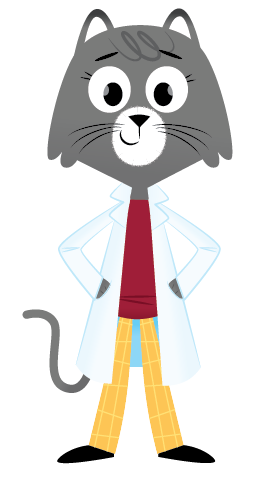Dear Annelise,
The other day I was out ice skating when I started thinking about your question. Water strider bugs skitter across ponds almost as if they were skating on ice.
I decided to visit my friend Dan Pope to find out how this works. He’s a graduate student at Washington State University who studies chemistry.
“Before talking about water, let’s talk about atoms,” he said.
He reminded me that everything is made up of atoms, and atoms are made up of parts called neutrons, protons, and electrons. The protons have a positive charge. The electrons have a negative charge. Opposite charges attract and similar charges repel each other.
S ome atoms get together with other atoms to form chemical bonds. The atoms can share electrons.
ome atoms get together with other atoms to form chemical bonds. The atoms can share electrons.
“But sharing is not always equal,” Pope said. “Some atoms pull more of these shared electrons toward them than others.”
Oxygen in water really doesn’t like to share electrons. It likes to bring electrons to itself. It becomes more negatively charged. That leaves hydrogen, the other atom in water, more positively charged.
Now, we can think of a water molecule like a magnet, Pope said. It has a positive and a negative side.
If you have two large magnets, it takes some force to pull them apart. For water, the force it takes to break the connections is a lot weaker.
But if you are very small, very light, and can spread out your weight, you don’t exert enough force to break the connections holding water molecules together. You have an amazing ability to stand on top of the water.
This really strong connection between molecules at the top of the water is what we call surface tension.
Besides using surface tension, many water bugs also have tiny hairs on their feet to help repel water. It’s like they have their own water skates. That gives me an idea. I’m going to see if I can design a way for us cats to walk on water using a water bug’s feet as inspiration.
You can also try your own surface tension experiment at home. Pour water on a plate. Sprinkle pepper on top. Observe. Then, add a drop of dish soap in the middle. What happened to the pepper? Does it stay still? Does it sink? Something else?
Or try this one. Rub a paperclip with your fingers. This adds a little oil to the paper clip. Place the paperclip on a small piece of tissue and gently place the tissue on a surface of water. Be careful not to get the paper clip wet. The tissue should absorb the water and sink. But something else happens to the paper clip. Tell me what you find out and how you think it works. Send a message to Dr.Universe@wsu.edu.
Sincerely,
Dr. Universe
|
|
|